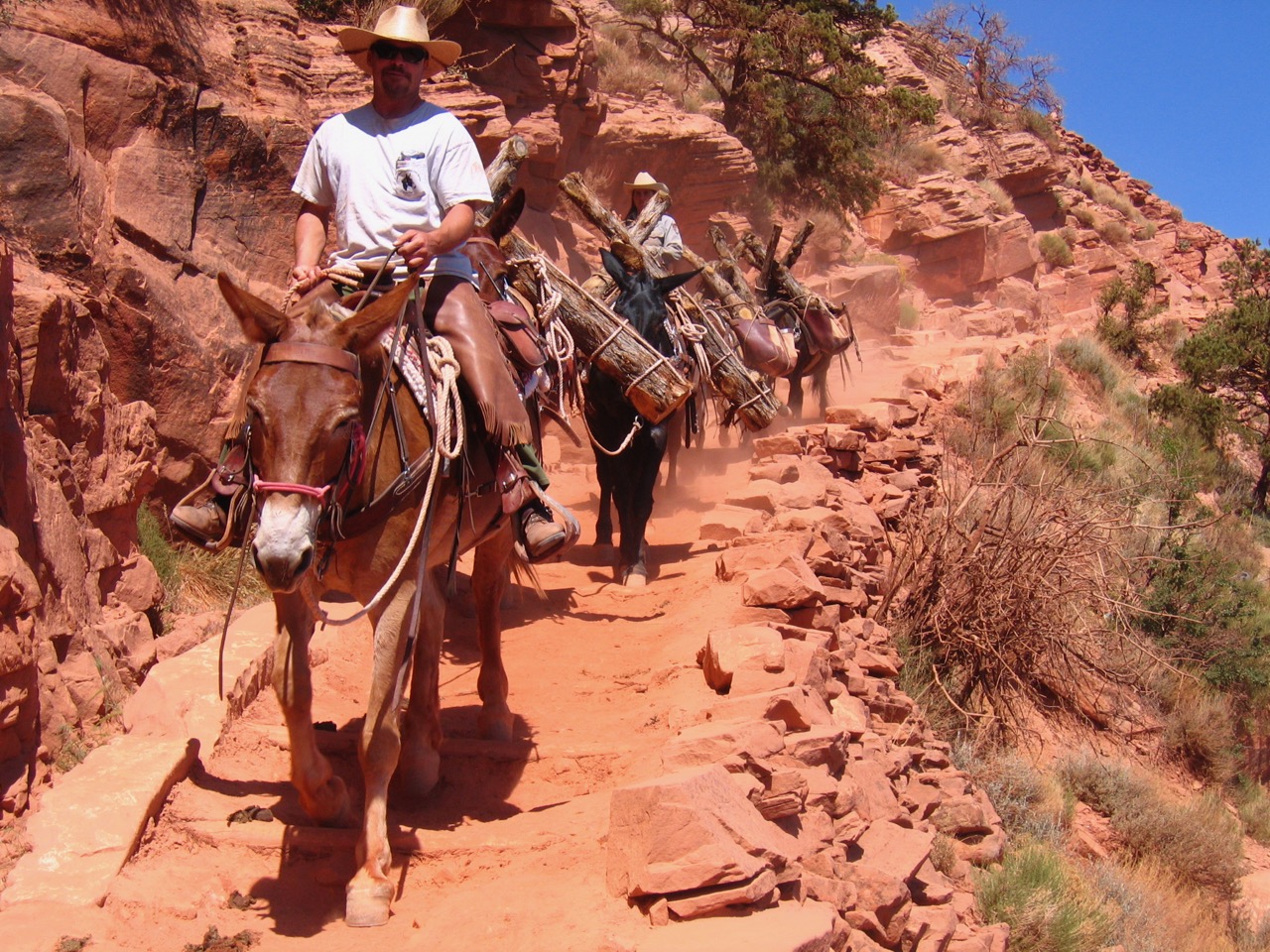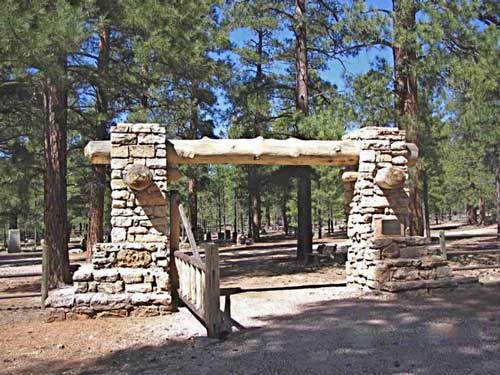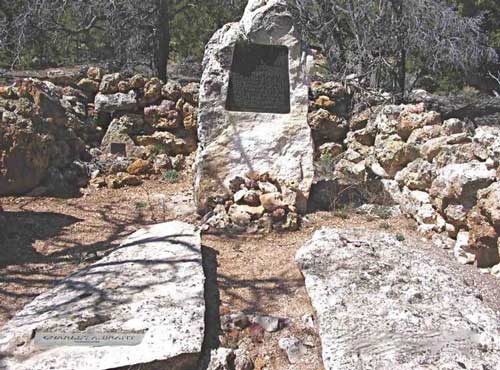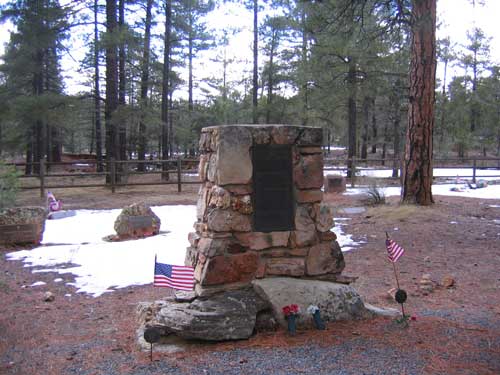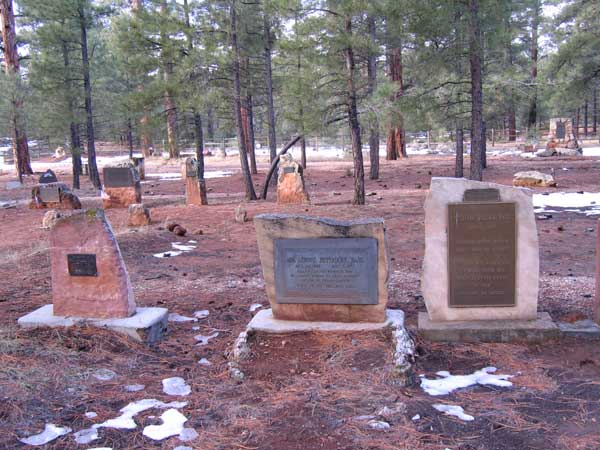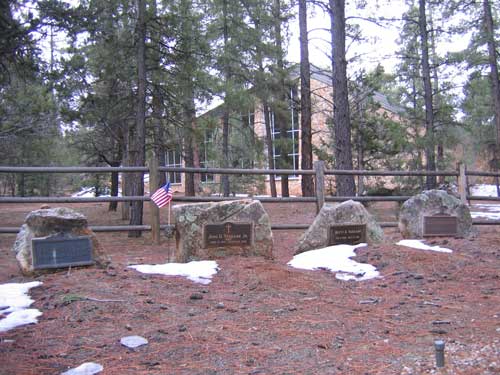Visitors walking among headstones at Pioneer Cemetery will see many familiar names from Grand Canyon history. Others are less well known. Some lived long lives at the Canyon, others came for awhile but never let go of their connection to this place.
The youthful bustle of Grand Canyon Village during the pioneer period apparently muffled thoughts of death and burial. All early Euro-American residents hailed from somewhere else, maintained homes in nearby gateway communities, or moved on before facing the grim reaper, and there was no local government to designate a common resting place. For whatever reason, in the years 1896-1928, canyon denizens often as not buried friends, strangers, and neighbors where they fell, if they buried them at all.
The gravestones and memorials tell of interesting stories, but some speak only of tragedy, such as the airline crash memorial. On June 30, 1956, 128 people died when a TWA Constellation and a United Airlines DC-7 collided over the eastern part of Grand Canyon near the confluence of the Colorado and Little Colorado rivers. The planes had both left Los Angeles, traveling east, and gradually converged at about 20,000 feet elevation. At the time, it was the worst air disaster on record; it prompted the formation of the Federal Aviation Authority. The remains of 29 passengers on the United Flight were not identified; they are buried in Grand Canyon Cemetery. The monument is inscribed with 31 names because two family members’ names were included.
Despite the unnerving number of skeletons found within and astride the canyon, their final stories evidenced only by broken bones or bullet holes, records reveal a few random internments. The Colorado River has claimed its share of victims since the late nineteenth century, but more often than not has refused to give up its dead. Several early drowning victims surfaced to be buried by companions or passersby, however, including Peter Hansbrough, one of three men who drowned while surveying Grand Canyon for a railway in 1889.

The first grave in the cemetery was that of John Hance.
Photo: Patricia Biggs
In 1901 William Henry Ashurst, a Flagstaff resident and canyon prospector since 1880, died in a landslide near the Colorado River below Grand Canyon Village. Although he had a family and home in Flagstaff, Ashurst’s friend, John Hance, buried him near the slide. He was later disinterred—twice—and ended up in the Grand Canyon cemetery.
In 1922 Rees Griffiths, working on what would become the South Kaibab Trail near the river, was killed by a boulder following a dynamite blast. Fellow workers and park rangers buried him in an alcove along the trail near Phantom Ranch. More than 80 years later, the gravesite is still well marked and tended informally by ranch residents.
John Hance, one of the first South Rim residents, canyon prospector, miner, tourism operator, and teller of tall tales, died in Flagstaff in 1919. Friends buried him at a little visited area nearly a mile east of Grand Canyon village. Only six weeks following Hance’s internment, Congress created Grand Canyon National Park. The National Park Service immediately launched a program of civic improvements, and by the middle 1920s, had designated John Hance’s grave as the centerpiece for the village’s first cemetery.
The location fit a common pattern among young communities in the American West, placing cemeteries a mile or so outside town development on a bit of unused land. Also true to form, the village grew to encompass the pioneer cemetery with the park’s new visitor center in 1957, and its first nondenominational church, the Shrine of Ages, in 1970.
Some Canyon residents opted not to be buried in the cemetery. Charles Brant was one of the earliest managers of El Tovar Hotel and Fred Harvey Company operations at Grand Canyon Village. He and his wife Olga were prominent village residents, well liked and respected, so when they died in the early 1920s, they were buried according to their wishes on a hill overlooking the village rather than in the cemetery. Residents who adopted their dog, Razzle Dazzle, interred the prized Airedale in the family plot when he barked his last in 1928.
In 1928 the John Ivens Post No. 42 of the American Legion contributed the rustic gate that still marks the cemetery entrance. On November 11, 1948, the American Legion post erected a monument to three Canyon residents who died in World War I and five who died in World War II.
The cemetery is a restful, well-tended few acres, visited by residents and tourists alike, and still invites residents and others who have made significant contributions to the history of Grand Canyon National Park to rest in peace.
Grand Canyon Cemetery today embraces the mortal remains of many canyon pioneers, park administrators, and village residents who have passed on in the past 80 years, including Emery Kolb, Pete Berry, Ralph Cameron, and Park Superintendent M.R. Tillotson. At least one gravesite, that of canyon pioneer William Wallace Bass, is only a monument placed beside his wife Ada, since his ashes were spread by airplane over Holy Grail Temple soon after his death in 1933.
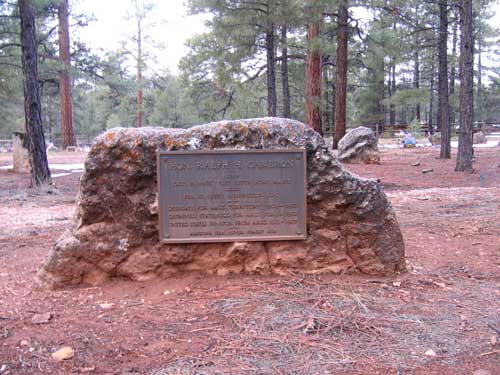
Ralph Cameron (1863-1953) ran a toll gate at the Bright Angel Trail head from 1903 to 1924. He came to the Canyon from Maine, served as a delegate for the Arizona Territory from 1909-1912 and as a United States senator for Arizona from 1921 to 1927. His gravestone reads, “Arizona can never forget him.”
Photo: Patricia Biggs
